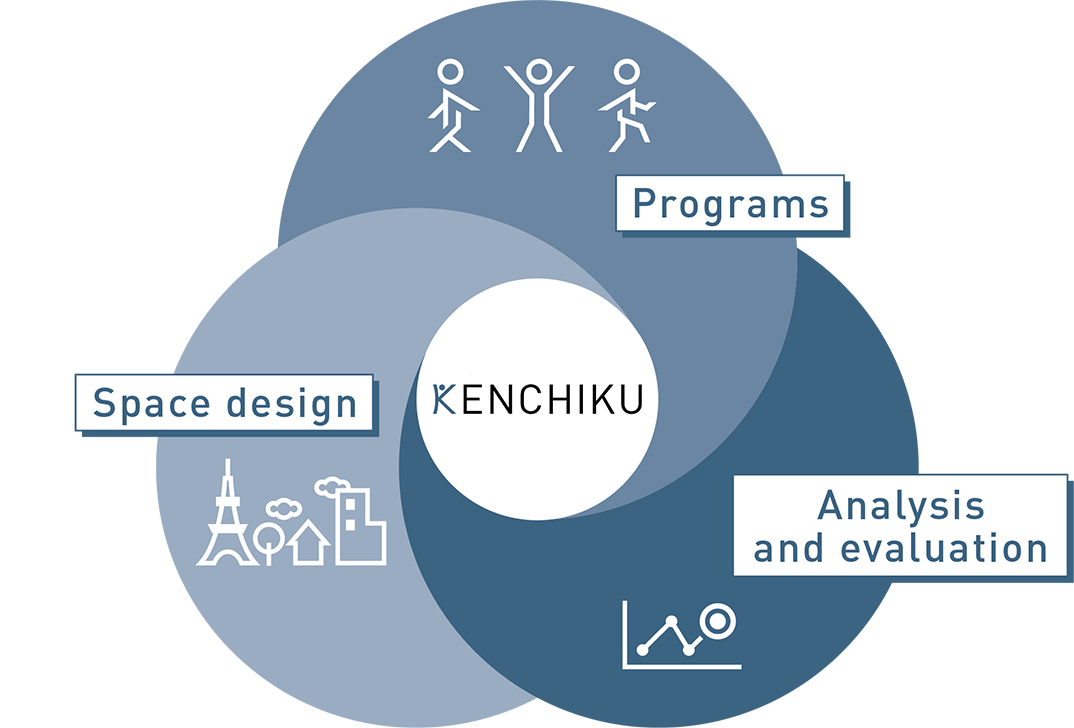Healthy Community Development

"KENCHIKU" Initiatives
To realize our concept of KENCHIKU must realize three initiatives.
First is evidence-based design.
Second are programs to realize human potential in the context of these designs.
Third is analysis of feedback from actual use.
This is a continuing process, with feedback looping back to inform design.


Design must be based on concrete evidence and feedback as part of an integrated program.
- To realize our concept of KENCHIKU must realize three initiatives.
- Design must meet WELL Building Standards.
- Design must draw not only on our expertise but on dialog with stakeholders.
- Design must aim at compact networks as part of planned communities.
- Design must aim at socially inclusive communities.

Programs supporting health and well-being. These programs must:
- Promote communication and social capital.
- Suit the needs and abilities of each and every individual.
- Promote relaxation and recovery from stress.
- Offer planning for regular meals and a balanced diet.
- Optimize layout and enhance facility utilization.

Medical science can be used to optimize both Design and Programs.
- Medical and epidemiological studies offer universality.
- Cohort studies elucidate causation.
- Interventional studies verify efficacy.
- Stage of ife course approach enhances community well-being.
- Health impact assessments inform community planning.
Key "KENCHIKU" Features
Healthy buildings and communities should be designed with plenty of attractive open spacefor communication and other activities. The goal is to facilitate human interaction and creativity as well as a general sense of well-being.

Communication for a sense of community
Daily exchange of greetings, casual conversation, and the like are gateways to deeper contact and understanding between people -- the kind that help people form real communities and participate socially.
- Social participation in the community has a significant effect on the health of the elderly.
- Enhancing workplace communication with both superiors and colleagues enhances the work life in general.
- Eating meals with others, rather than alone has a positive effect on health.
And other factors.

Activity for health and well-being
Enjoyment of a wider variety of activities in a natural way with fewer constraints on time or place is good for people mentally and physically. Such activities should be an expression of personal ability and preference, and should be easily available.
- Walking and using stairways has a positive effect on fitness and prevention of disease.
- Physical activity also promotes communication.
- Stretching and other light exercise relieves not just physical aches and pains but psychological stress, as well.
And other factors.

Ambience fosters well-being
The ambience of a building or space is enhanced when human senses are engaged. Sound, sight, the sense of smell, touch all matter. With the right ambience, a place just “feels” right and we feel good being there. This fosters physical and mental well-being.
- Biophilic design draws on our natural affinity for organic forms.
- Environments should promote circadian and other natural rhythms that relieve stress and protect against a variety of illnesses.
- The use of wood to relieves stress and fatigue.
And other factors.
